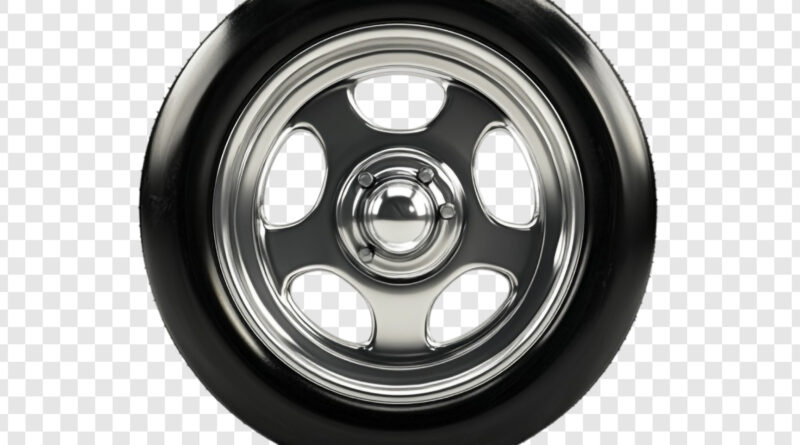The Strength and Stability of Cast Iron Wheels Explained
Cast iron wheels have long been a preferred choice for heavy-duty applications due to their exceptional durability, stability, and load-bearing capacity. Whether used in industrial equipment, manufacturing facilities, or material handling applications, these wheels provide reliability and longevity that few other materials can match. Understanding their construction, benefits, and applications can help businesses and individuals make the right choice when selecting wheels for demanding environments.
Composition and Construction of Cast Iron Wheels
Cast iron is an alloy primarily composed of iron, carbon, and silicon, making it one of the strongest materials for wheel construction. Unlike steel or aluminum, cast iron undergoes a special casting process that enhances its durability and wear resistance. This composition allows cast iron wheels to withstand significant loads while maintaining their structural integrity over time.
One of the most notable aspects of cast iron wheels is their hardness. This hardness makes them highly resistant to deformation and wear, ensuring that they last much longer than wheels made from softer materials like rubber or plastic. Additionally, cast iron wheels have a solid construction, which helps distribute weight evenly and reduces the risk of bending or warping under heavy loads.
Exceptional Load-Bearing Capacity
One of the primary advantages of cast iron wheels is their superior load-bearing capacity. In industrial and manufacturing settings where heavy machinery, equipment, and materials must be moved efficiently, cast iron wheels provide unmatched strength. Unlike rubber or plastic wheels, which may compress under heavy loads, cast iron maintains its shape, ensuring smooth and stable movement.
Warehouses, factories, and construction sites often rely on cast iron wheels for trolleys, carts, and conveyor systems due to their ability to support substantial weight without compromising performance. This strength reduces downtime caused by wheel failures and minimizes the need for frequent replacements, making cast iron wheels a cost-effective solution for demanding applications.
Durability and Resistance to Wear
Durability is a key feature that sets cast iron wheels apart from other materials. Their robust structure makes them highly resistant to wear and tear, even in harsh environments. Unlike rubber wheels, which can deteriorate over time due to friction, chemicals, or extreme temperatures, cast iron wheels remain intact and functional for extended periods.
In addition to being abrasion-resistant, they also exhibit excellent resistance to corrosion. Many industrial environments expose wheels to moisture, chemicals, and harsh cleaning agents that can degrade other materials. With proper coating and maintenance, cast iron wheels can withstand these elements, further enhancing their lifespan.
Stability and Precision Movement
Stability is crucial in many industrial applications, and cast iron wheels provide exceptional steadiness when transporting heavy loads. Unlike softer wheels that may absorb shocks and create inconsistencies in movement, they offer a firm and precise rolling experience.
The stability of cast iron wheels also contributes to better handling and maneuverability. In applications such as assembly lines, manufacturing plants, and automated systems, precision is critical. These wheels ensure consistent movement with minimal deviations, allowing machinery and equipment to function optimally without unnecessary vibrations or shifts.
Heat and Temperature Resistance
Industrial operations often generate high temperatures due to friction, machinery movement, or external environmental conditions. Many materials, including rubber and plastic, can degrade or even melt when exposed to extreme heat. Cast iron wheels, on the other hand, exhibit exceptional heat resistance, making them suitable for use in high-temperature environments.
Industries such as metalworking, foundries, and food processing require wheels that can endure exposure to heat without losing their structural integrity. They provide this reliability, ensuring smooth and uninterrupted operations even in the most demanding conditions.
Minimal Maintenance Requirements
Maintenance is an important factor when selecting wheels for industrial and commercial applications. Cast iron wheels require minimal upkeep compared to other wheel types. Their solid construction reduces the likelihood of damage, and their resistance to environmental factors means they do not need frequent replacements.
Regular lubrication of wheel bearings and occasional inspection for rust or surface wear can help extend their lifespan even further. When properly maintained, cast iron wheels can last for years, providing consistent performance with minimal downtime.
Noise Considerations
One potential drawback of cast iron wheels is that they can generate noise when rolling on hard surfaces. Unlike rubber or polyurethane wheels, which absorb impact and provide quieter movement,they produce a distinct rolling sound due to their rigid structure.
To mitigate this issue, cast iron wheels are often paired with noise-reducing components such as cushioned bearings or rubberized coatings. In environments where noise control is a priority, users may also opt for alternative flooring surfaces to minimize sound levels while maintaining the benefits of cast iron wheels.
Conclusion
Cast iron wheels stand out for their superior strength, stability, and durability, making them an excellent choice for demanding industrial and commercial applications. Their high load-bearing capacity, resistance to wear and corrosion, and ability to function in extreme temperatures provide unmatched performance compared to other wheel materials.
Whether used in manufacturing, material handling, or heavy machinery, they offer long-term reliability with minimal maintenance. Their ability to provide precision movement, stability, and cost-effectiveness makes them an essential component in industries that require uncompromised strength and performance.

